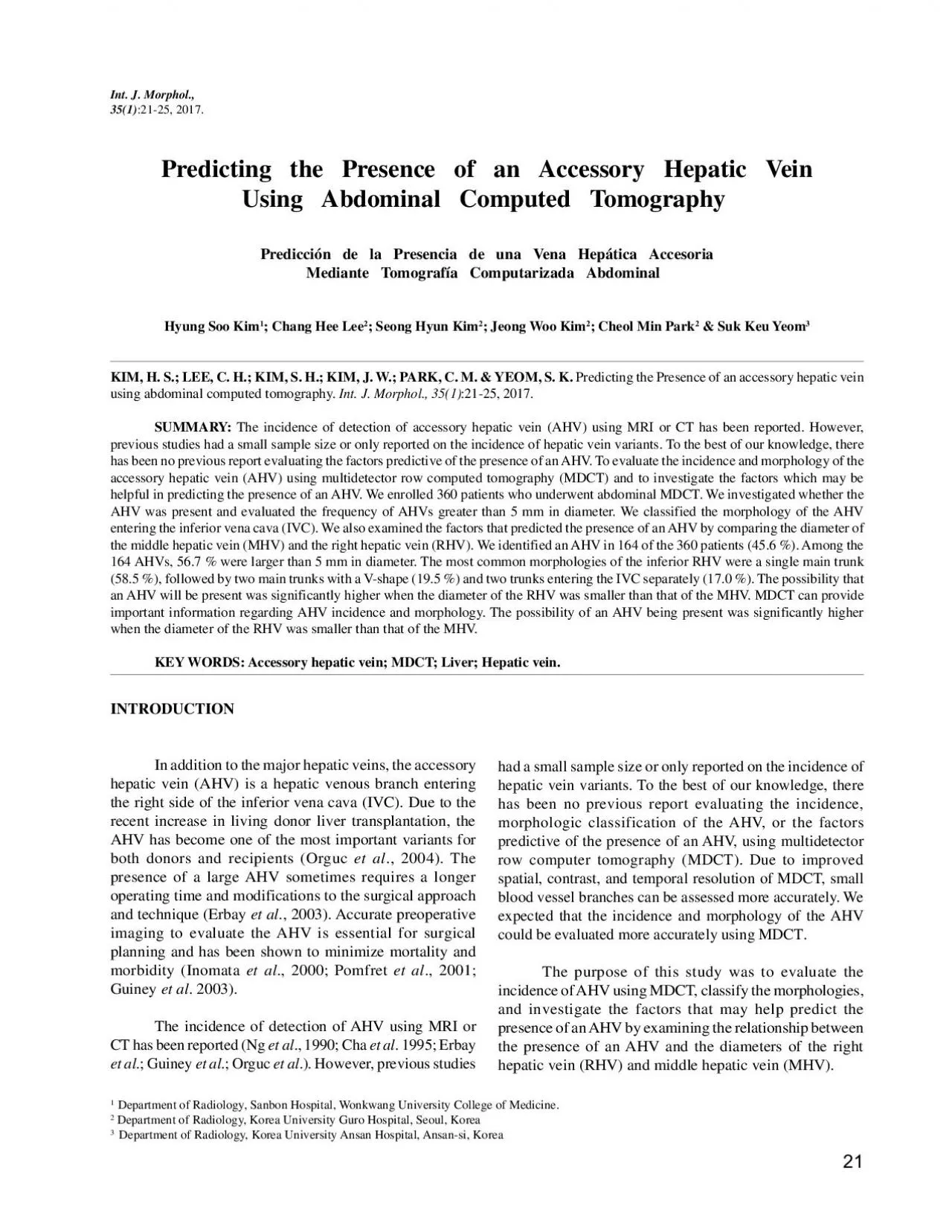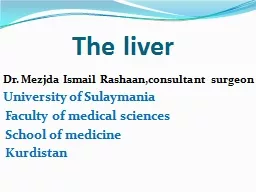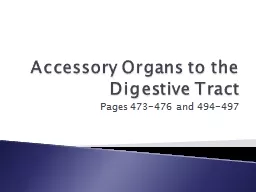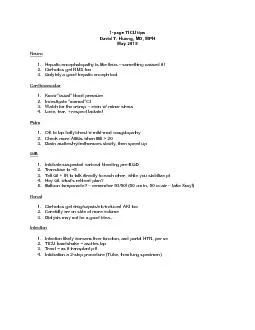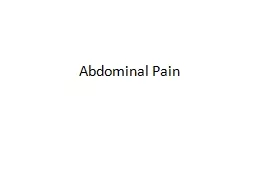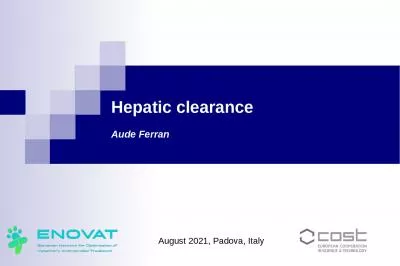PDF-Predicting the Presence of an Accessory Hepatic VeinUsing Abdominal Co
Author : felicity | Published Date : 2022-10-14
hepatic vein variants To the best of our knowledge theremorphologic classification of the AHV or the factorspredictive of the presence of an AHV using multidetectorspatial
Presentation Embed Code
Download Presentation
Download Presentation The PPT/PDF document "Predicting the Presence of an Accessory ..." is the property of its rightful owner. Permission is granted to download and print the materials on this website for personal, non-commercial use only, and to display it on your personal computer provided you do not modify the materials and that you retain all copyright notices contained in the materials. By downloading content from our website, you accept the terms of this agreement.
Predicting the Presence of an Accessory Hepatic VeinUsing Abdominal Co: Transcript
Download Rules Of Document
"Predicting the Presence of an Accessory Hepatic VeinUsing Abdominal Co"The content belongs to its owner. You may download and print it for personal use, without modification, and keep all copyright notices. By downloading, you agree to these terms.
Related Documents

